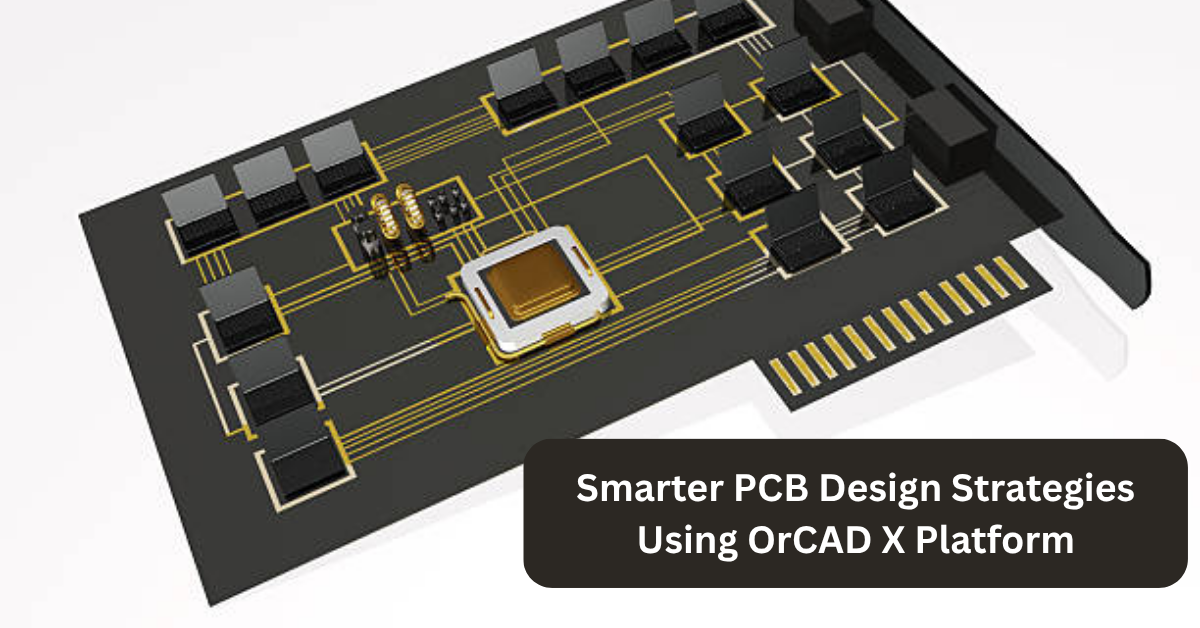In the world of modern electronics, Printed Circuit Boards (PCBs) form the foundation of nearly all devices, from smartphones to industrial automation systems. For engineers and design teams, staying ahead in PCB layout planning is no longer just a competitive edge—it’s a necessity. With the rising complexity in circuit design and compact device architecture, there’s an increasing need for smarter, more adaptable layout strategies. This is where the role of advanced tools becomes essential for every OrCAD PCB designer, especially those looking to optimize their workflows while ensuring compliance with modern standards.
As we navigate through 2025, efficient PCB design isn’t just about placing components correctly; it’s about integrating intelligent practices, leveraging automation, and meeting both functional and regulatory demands in real time. In this article, we explore smart PCB design strategies aligned with the latest industry expectations, while also offering insights on how platforms like OrCAD X help streamline this evolving process.
1. Why Smarter PCB Design Is a 2025 Priority
The PCB industry has witnessed a significant shift in design approaches over the past few years. With increasing demands for higher performance and smaller form factors, outdated linear methods of design are no longer viable. Companies are now focusing on intelligent design automation, predictive simulation, and real-time collaboration.
Key drivers for smarter PCB design strategies include:
- Miniaturization of components
- Complex multilayer boards
- Thermal and signal integrity concerns
- Regulatory compliance and material restrictions
- Increased demand for time-to-market efficiency
A modern OrCAD PCB designer must now balance creativity with technical precision while staying aligned with these fast-paced developments.
2. Modular and Scalable Layout Planning
Smarter PCB design starts with modularity. Breaking the board down into smaller, manageable sections or functional blocks helps maintain clarity and enables scalable modifications. This becomes especially important in collaborative environments where multiple teams work on various aspects of a single board.
Benefits of modular PCB planning:
- Simplifies troubleshooting and testing
- Enhances scalability for product variations
- Speeds up layout revisions and upgrades
Scalable design strategies also allow engineers to create reusable circuit blocks, which are a significant advantage for iterative product development.
3. Importance of Pre-Layout Analysis
Before jumping into layout, a forward-thinking OrCAD PCB designer performs thorough pre-layout simulations. This includes signal integrity (SI), power integrity (PI), and thermal management analysis. Addressing these aspects early in the design process helps minimize rework and ensures optimal board performance under real-world conditions.
Pre-layout analysis also helps in defining:
- Component placement guidelines
- Trace width and spacing
- Grounding and decoupling requirements
- Layer stack-up configuration
By integrating these elements into your planning, the probability of post-fabrication issues drastically reduces.
4. Integration of Intelligent Automation
Automation in PCB design is more than a convenience—it’s a strategic advantage. OrCAD X and similar platforms introduce features like auto-routing, constraint-driven layout tools, and real-time design rule checks (DRCs) that help designers move from concept to prototype faster.
Automation aids in:
- Accelerating repetitive tasks
- Ensuring consistent rule application
- Reducing human error
- Enabling quick layout iterations
Smarter routing strategies now rely on AI-enhanced algorithms that not only complete the task faster but also optimize for electrical performance and manufacturability.
5. Material and Regulatory Considerations
2025 also brings stricter global regulations around hazardous materials and environmental compliance. Smarter PCB design includes early consideration of these compliance standards. Materials chosen must comply with RoHS, REACH, and other international guidelines. For instance, designers must stay updated with changes such as the ECHA’s updated list of hazardous chemicals, which directly influences component and substrate selection. By aligning design practices with such regulations early in the process, companies avoid costly revisions and product recalls, making compliance an integrated part of the design—not an afterthought.
6. Cross-Functional Collaboration and Documentation
In large-scale design projects, effective collaboration between electrical, mechanical, and compliance teams is critical. Smarter PCB strategies use cloud-enabled platforms and shared libraries to promote transparency and documentation throughout the product development cycle.
Effective documentation ensures:
- Quicker onboarding of new team members
- Better communication with manufacturers
- Accurate revision tracking
- Easier integration with mechanical CAD tools (e.g., ECAD-MCAD co-design)
An OrCAD PCB designer working in a distributed team can dramatically reduce design cycles by collaborating through such integrated platforms and shared workflows.
7. Constraint-Driven Design for Signal Performance
A constraint-driven design environment helps in maintaining signal integrity and achieving high-speed performance. By defining design constraints early—such as length matching, impedance control, and timing—you avoid layout conflicts later in the project.
These constraints also guide:
- Differential pair routing
- Controlled impedance traces
- High-speed net placement
- Crosstalk minimization
Using constraint-based rules helps ensure the PCB meets performance targets from the start, reducing the need for extensive post-layout verification.
8. DFM and DFA for Smarter Manufacturing
Designing with manufacturing (DFM) and assembly (DFA) in mind ensures a smoother transition from prototype to production. A well-structured design will minimize manufacturing defects, reduce production costs, and enhance product reliability.
DFM/DFA principles include:
- Proper pad sizing and spacing
- Avoidance of tombstoning and solder bridging
- Via-in-pad management
- Component orientation for automated assembly
These considerations help create layouts that are not only functional but also cost-effective to produce. Smarter platforms offer real-time DFM checks, giving feedback while designing.
9. Future-Proofing with Reusability and Version Control
A smarter PCB strategy involves designing with the future in mind. Reusable design blocks, shared libraries, and strict version control systems help maintain consistency across multiple products or revisions.
Version control enables:
- Traceability of design changes
- Collaboration without data loss
- Branching for experimentation
- Faster rollback in case of errors
These systems are crucial in larger teams and long-term projects, where maintaining design integrity is essential.
10. Continuous Learning and Platform Evolution
Design platforms like OrCAD X evolve constantly, incorporating features to simplify even the most complex design tasks. For a modern OrCAD PCB designer, staying updated with these tool capabilities is essential for staying competitive in 2025.
Key ways to stay current include:
- Participating in online training
- Attending industry webinars
- Engaging with user communities
- Reviewing release notes and documentation
Incorporating the latest platform capabilities leads to smarter design strategies, shorter cycles, and better end products.
Conclusion: Smarter Design Is the Future of PCB Development
The PCB design landscape is evolving rapidly, and success in this space requires more than just technical know-how. It demands strategic thinking, real-time collaboration, regulatory awareness, and the ability to harness intelligent platforms effectively.
By integrating modular planning, automation, regulatory foresight, and advanced collaboration into your design practices, you can remain ahead of the curve in 2025. Whether you’re a seasoned OrCAD PCB designer or someone just stepping into the field, adapting to these smarter strategies is key to building robust, compliant, and scalable electronic solutions.



